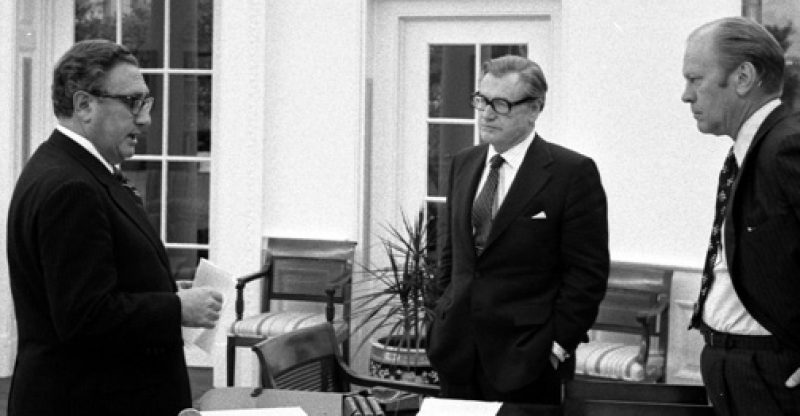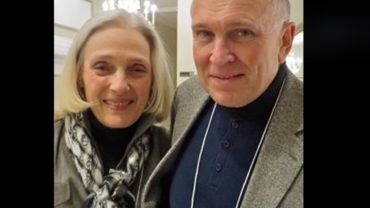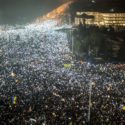Allegations regarding “Butch” Merritt, Watergate, Intelligence Agencies and “Crimson Rose,” Vol. XVI
Endgame – Part Three
Written (and first posted) by Kris Millegan, April 6, 2011
The illegal we do immediately. The unconstitutional takes a little longer. – Henry Kissinger, New York Times, October 28, 1973
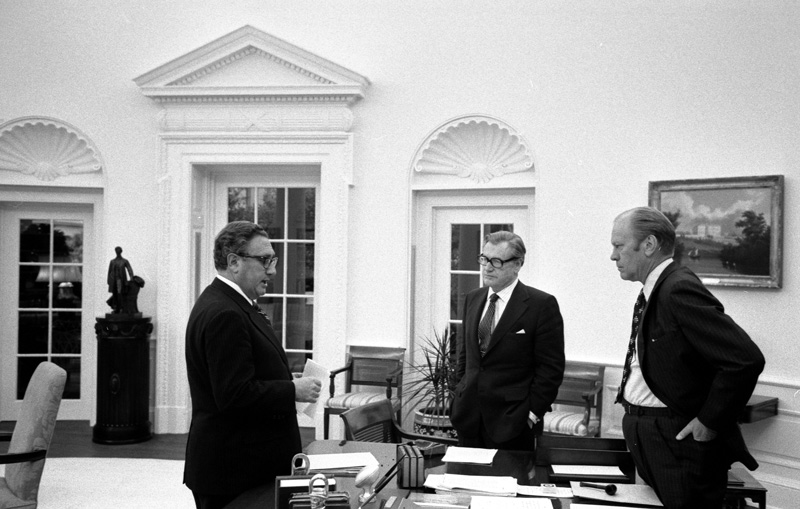
Empire doesn’t happen overnight. It takes time for all the pieces to fall in place. A little prodding, here and there, now and then, moves “history” along. Imperializing our republic is no easy task. The republic must be breached, its power and offices weakened.
More than simple politics, sophisticated brutal methods were and are being used against our institutions and populations to accomplish these goals: assassinations, scandal, blackmail and psychological warfare.
Watergate was a calculated strategy (game/psyop) to get rid of the troublesome blackmailer Nixon, to consolidate the drug trade, to damage the Office of the President of the US, and to firmly place the US government in the hands of the corporate “powers-that-be.”
The game is played by creating sides, and playing them against each other towards a qualified goal. Us versus Them, Good versus Evil, Right versus Left: the dialectic tango.
Nixon telegraphed his ambitions, and with his foibles he was easy to manipulate. Tricky Dicky was a great focal point to swing a couple of sticky deals, and his dark animus was very useful. Nixon was easy for people to hate. When you “hate” someone, your judgment can be easily suspended while reveling in the desired outcome, and you then become a useful “actor,” hitting marks and spewing lines on cue.
From Fletcher Prouty’s JFK, The CIA, Vietnam and the Plot to Assassinate John F. Kennedy, some more understandings on the “games”:
It was the spring of a memorable year, 1972. On February 7, President Nixon’s secretary of commerce, Maurice Stans, opened a remarkable “White House Conference on the Industrial World Ahead, a Look at Business in 1990.” This three-day meeting of fifteen hundred of this country’s leading businessmen, scholars, and the like concluded with a memorable and prophetic statement by Roy L. Ash, president of Litton Industries, and incidentally one of the original “Whiz Kids” from Harvard with Bob McNamara:
… state capitalism may well be a form for world business in the world ahead; that the western countries are trending toward a more unified and controlled economy, having a greater effect on all business; and the communist nation are moving more and more toward a free market system. The question posed [during the conference] on which a number of divergent opinions arose, was whether “East and West would meet some place toward the middle about 1990.”
That was an astounding forecast before such an eminent group considering that it was made in 1972 and that it was actually “about 1990” when the Soviet Union did weaken and the Cold War came to an end, in much the way he had visualized. … During a speech made in 1991, Giovanni Agnelli, chief executive officer of the Italian Fiat Company, recalled: “In 1946 Winston Churchill spoke in Zurich of the need to build a United States of Europe.” That was another long-range forecast that is being proved quite accurate. Then Agnelli updated that comment with another statement that confirms the fact that the power of ideas, of course he means the ideas of the power elite, is greater than guns: “The fall of the Soviet Union is one of the very few instances in history in which a world power has been defeated on the battlefield of ideas.”
… These events are not the result of a throw of the dice. They are planned. Turning back to the White House Conference in 1972, before February had ended Secretary Stans had resigned to become chairman of the Committee to Reelect the President. That was the spring of the year 1972, the year when the “dirty tricks” business went public, with the birth of CREEP and the days of “Watergate.” In that same year, under President Nixon, an unusual and most effective international business organization was formed by the business interests of the Dartmouth Conference, whose meetings were regularly scheduled by the Rockefellers. It was called US-TEC, for the United States-USSR Trade and Economic Council. Backed by the Nixon administration and the international banker David Rockefeller, the Council that listed most of the Fortune 500 corporate leaders among its membership, along with hundreds of their counterparts in the Soviet Union, opened offices in New York and in Moscow for regular activities. Meetings of the membership were scheduled every six months alternately in each location. Usually these meetings were augmented by major trade fair exhibitions from each country. This organization publishes a fine magazine that is not classified. But you cannot get a copy of it unless you are a member. [emphasis added]
US-TEC has done much to make Roy Ash’s forecast at the “Look at Business in 1990” conference come true. Business, in 1972, took aim at the Evil Empire, as President Reagan called the Soviet Union a decade later.
Not much has been published openly about either of these organizations, the United States membership and the Soviet membership … Their work has included the promotion of the military-industrial complex and of the massive international agricultural combines in their voracious search for new business in new fields. In this connection, the CIA is one of the primary activists and promoters for these combines, especially since its more recent emphasis upon the business of economic intelligence. Not all wars are fought with guns. Economic warfare can be just as powerful and just as deadly.
In March 1973, the White House arranged for a meeting of representatives of the largest petroleum-consuming organizations in the country. These companies included the airlines, railroads, trucking firms, utilities, and government agencies such as the Government Services Agency and the Department of Defense. This meeting took place in the Washington offices of the National Defense Transportation Association (NDTA). I attended that meeting as a railroad representative.
At that time, as I recall, gasoline was selling at the service station pumps for under forty cents per gallon, and the railroads were buying fuel on long-term contracts for about eleven cents per gallon.
The White House spokesman informed this group that a recent study had warned that petroleum use was far ahead of new discovery and that reserves of the world’s oil supply might be depleted in the not too distant future, perhaps even before the year 2000. He stated that the meeting had been called to alert all major consumers that before the end of the year it would be all but impossible to make a long-term contract for petroleum and that prices would be up by a factor of two or three. I was sitting between representatives of the airlines and the General Services Administration. You could have heard a pin drop. By the end of the year those predictions concerning price had proved to have been conservative.
At the same time the Federal Power Commission had begun a natural gas survey because “the shortage of natural gas had been a source of surprise, shock, and disbelief to many of those affected, but not to serious students of long-term United States resource development.” Then, as if right on schedule, an Arab-Israeli war broke out in late 1973. Before long it was announced that the Arabs had instituted an oil embargo and that available supplies of automobile gasoline would drop around the world. Soon thereafter we were all parked in long lines leading- to the gas pumps waiting for the little gasoline available and at any price.
In early 1974 the prestigious Center for Strategic and International Studies in Washington, D.C. invited several hundred mid-level officials from all parts of the government, from congressional offices, and from local offices of major corporations to a new federal staff energy seminar. These were more or less monthly meetings where these invitees could listen to world leaders in the field of energy, particularly petroleum. Again, I was invited as a railroad representative and was pleasantly surprised at the high caliber of the subjects and the speakers, such as Henry Kissinger and James Schlesinger, and by the fact that these sessions continued for about four years. It is clear that an objective of those meetings was to have all of us marching to the same drum. We all began to believe that the fast-rising price of petroleum was fully justified, that a “world price” was inevitable and that the “last barrel” would be drawn from some well not too long after the year 2000. As we now know, much of this “energy crisis” was a massive production designed and orchestrated to raise the price of petroleum from its long-time base of approximately $1. 70 per barrel to a high, at times, of $40.00. Except for the international drug trade, no other production in the fields of economic warfare had ever made so much money … and continues to do so.
…
This CIA connection in the business of making war, and more recently of making big-business bigger, has introduced another pattern of events that this country has experienced, though not as frequently as some other nations. To oversimplify, this may be seen as the agency’s ability to “rekindle the fire” whenever some new occurrence is needed to raise the level of concern throughout the nation.… This method of international gamesmanship is called “Terrorism.” On September 1, 1983, the New York Times, and most other newspapers around the world, displayed the headline “Korean Jetliner With 269 Aboard Missing Near Soviet Pacific Island.” Meanwhile, the same front-page article reported: “Korean Foreign Ministry officials cited the United States Central Intelligence Agency as their source for the report that the plane had been forced down on Sakhalin.” The Times continued, “All 240 passengers and 29 crew members were believed to be safe.”
That front-page story related that, based upon this same CIA message that had been sent to Korea and Japan, an official of the U.S. Department of State had phoned the family of Georgia representative Larry P. McDonald, a passenger on that flight, late in the evening of August 31, 1983. The purpose of that call was to inform them that the plane, its passengers, and crew were safe on the ground at Sakhalin Island. This, of course, was untrue. The CIA message had been fabricated for other purposes, among them to cause the Japanese to recall the Air-Sea Rescue Fleet.
It is difficult to believe that officials of the Department of State would have made that humanitarian call if they did not believe in the validity of the CIA message. Why did the CIA send such a message?
The airliner never landed on Sakhalin Island, the passengers and crew have never been found and the aircraft had disappeared. That issue of the New York Times had been printed late in the evening of August 31, 1983, and was accurate at that time. But a series of stunning events followed.
At ten A.M., September 1, 1983, in Washington, Secretary of State George Shultz appeared on nationwide TV to announce the Soviet Union had shot down that Korean airliner in cold blood. The plane and its occupants had vanished. Immediately out of Washington arose the ogre of the Evil Empire. The Cold War had reached its zenith. Within days, the largest Defense Department budget ever passed in peacetime whizzed through Congress and was eagerly signed by President Reagan. Thus began the: most costly peacetime decade in the history of civilization.
So why was that most timely CIA message reported by the New York Times? During the evening of August 31, all that the Times knew was that the CIA message had been sent, what it said, and that the news media around the world knew about it. The same issue of the Times also reported that the plane had been on Japanese radar for six minutes before it disappeared. That positive radar trail led to a crash site southeast of Hokkaido, far from Sakhalin. The Japanese had sent twelve air-sea rescue vessels toward that location. While they were at sea, the CIA message arrived in Seoul and Tokyo and at the Department of State. As was predictable, as soon as the Japanese received that message, they recalled their rescue boats, and the chance to locate the wreckage, save survivors, and confirm its identity was lost.
With that essential diversion safely accomplished the government could announce any scenario it wanted for the loss of the Korean airliner and get away with it. No one was ever going to be able to locate the wreckage of the plane deep in the Kurile Trench of the Pacific Ocean. This was the scene during the first weeks of September 1983. In the midst of this international uproar…. The world’s largest trade fair had been scheduled by US-TEC to be held in Moscow on October 17-25, 1983. This was the month after the mysterious loss of the Korean airliner, yet representatives of 109 of the largest American companies traveled to Moscow, home of the Evil Empire, to carry out their business as usual at the “Agribusiness USA” trade show.
As we look back at this trade show, at the Evil Empire days and at the existence of this most important US-TEC organization, we discover more elements of that power elite structure that we have been describing. Furthermore, this record confirms that what Roy Ash said during the 1971 conference about “East and West would meet some place toward the middle about 1990” was not a prediction but a master plan.
Such plans are comparable to the work of Allen Dulles as the OSS chief in Geneva during World War II with selected Germans, and to the activities of T. V. Soong in China during the same period. These are examples of how these higher echelons are above warfare, both hot and cold, as they continue their own games on a more exalted level on both sides at the same time.
An item in a US-TEC journal of 1977 was written by David Rockefeller, chairman of the Chase Manhattan Bank. He has been one of the world’s most important international bankers as head of one of its most important banks. His letter made reference to “an unbroken relationship with Russian financial institutions that straddles well over fifty years.”
Think back fifty years, from 1977 to 1927, and recall all of the enormous ideological, military, economic, and political problems that existed between the East and the West. Yet Rockefeller and Chase Manhattan took pride in the fact that they had been in Moscow during that time doing business in the center of the maelstrom. 1 have mentioned earlier the statement of the American charge in the Saigon embassy to the effect “that in case of bankruptcy [of the country] which we now confront, bankers have [the] right to organize a receivership.” That is an international banker’s way of putting it. He expected, as only natural, that bankers would arrange the policy for what took place in Vietnam, and they have done just that. All of these things come together. While the President of the United States harangued the world about the Evil Empire, his good friends, our senior businessmen, were packing their briefcases for another big meeting for business as usual in Moscow. Rockefeller had reminded everyone that he and his banking interests had been working there since 1927, and then as a small aside, related in that same letter in the USTEC journal how “the seventh session of the Dartmouth Conference in Hanover in 1972 had led to the idea of forming “a joint high-level Trade and Economic Council.”
And some more from the highly recommended Gerald Colby’s, Thy Will Be Done:
Pocantico’s Watergate Secrets
To the uninitiated, Republican politics seemed topsy-turvy. Nelson Rockefeller, the liberal, appeared to liberals to be the warmonger on Vietnam, even the executioner of African Americans in his own state, while Richard Nixon appeared to be the would-be peacemaker.
This change in the Republican political spectrum alone should have indicated that Nixon’s choice of the New York governor to nominate him for a second term at the 1972 Republican convention was not merely the usual gesture of party unity. Thanks to Nelson’s move to the right, there was little gap to close between the Right and liberal wings of the party- at least no obvious gap. Nelson had demonstrated his willingness to shed much of his liberalism and move to the right to join the new Republican mainstream.
The Rockefellers showered $260,700 on the Republican campaign that year. Nelson personally ran Nixon’s campaign in New York State to give the president the biggest victory of any state in the Union. He traveled more than 30,000 miles to deliver 44 speeches in 33 cities to help Nixon. Nelson had been a loyal member of the President’s Foreign Intelligence Advisory Board, not because he liked Nixon, but because he agreed with most of the administration’s foreign policy initiatives – the invasion of Cambodia, the resumed bombings of North Vietnam, the mining of Haiphong Harbor, and the increased bombings in the countryside and police repression of Vietnamese civilian “suspects” despite the My Lai massacre. * [* Nixon opposed cutting the budget of the CIA’s local assassination teams for Colby’s Operation Phoenix. “We got to have more assassinations. Killings. That’s what they’re doing [the other side].” Kissinger was equally callous. “I hold the strong view that human rights are not appropriate for discussion in a foreign policy context,” he told Chilean dictator Augusto Pinochet’s foreign minister on May 8, 1975, two years after the military coup that toppled President Salvador Allende and began the repression that would take an estimated 50,000 lives by 1976. See Seymour Hersh, The Price of Power (New York: Summit, 1983), pp. 135- 36.] After all, his protégé, Henry Kissinger, was overseeing that policy and effectively neutralizing arch conservatives who considered Rockefeller anathema.
Kissinger’s ignorance of Latin America and Nixon’s hatred of any Kennedy legacy like the Alliance for Progress did have their fallout on Nelson, however. Cutbacks in foreign aid had triggered the Chilean cancellation of Nelson’s visit during his 1969 tour. The coincidental lecture at a June 1969 White House meeting of Latin American ministers by Chile’s foreign minister, Gabriel Valdes, on North-South trade and financial inequities, left Nixon in a rage. When the minister explained that Latin America was sending back to the United States $3.80 for every dollar it received in U.S. aid, Nixon interrupted. The statistic must be wrong, the president said. The minister answered that his source was a study by a major American bank.
Kissinger seized the opportunity to appease his superior and to play on Nixon’s intolerance of such “Communist-leaning” liberal nationalist governments as Eduardo Frei’s in Chile. Nixon had taken Valdes’s comments as a personal insult, and Kissinger was eager to answer in kind.
The next day, Kissinger was staring Valdes down at the Chilean embassy. “Mr. Minister, you made a strange speech,” Kissinger opined. “Nothing important can come from the South. History has never been produced in the South. The axis of history starts in Moscow, goes to Bonn, crosses over to Washington, and then goes to Tokyo. What happens in the South is of no importance. You’re wasting your time.”
Valdes was astonished. “Mr. Kissinger, you know nothing of the South.”
“No,” Kissinger responded, “and I don’t care.
Nelson Rockefeller, however, did care. Frei had been a Rockefeller favorite, enjoying the backing of David’s Business Group for Latin America, whose members were the principal conduit for corporate and CIA funding of Frei’s 1964 presidential campaign against Salvador Allende. * [*The CIA’s liaison to Rockefeller’s Group, Enno Hobbing of Guatemala coup fame and Richard Aldrich’s Latin American Information Committee, later became the Group’s top operations officer under its new incarnation, the Council of the Americas. See Hersh, The Price of Power, p. 260. ]
Although he would back Nixon in overthrowing Freis leftist successor, again Allende, in 1973, Nelsons loyalty to the president was being severely put to the test by the 1972 reelection campaign. Nixon did not, of course, dump his vice president and former Rockefeller-backer, Spiro Agnew. Agnew was useful to Nixon as a foil for attacks on his enemies, despite rumors that Agnew had been deeply involved in Maryland’s corrupt graft-taking political machine. Agnew was more to Nixon’s liking than was Nelson Rockefeller.
So were CIA veterans of the Guatemala and Bay of Pigs invasions for finding and plugging up leaks to the press and for carrying out illegal operations against Nixon’s long list of “enemies.” This “Plumbers Unit” – headed in the field by E. Howard Hunt- had as its first assignment the discovery of who was leaking intelligence documents revealing the hidden history of the Vietnam War. Wiretaps were placed on the phones of current and former staff members of the National Security Council (NSC). Break-ins were proposed to recover documents believed to be stored at the Rockefeller-funded Brookings Institution. When the New York Times was preparing to publish the Pentagon’s top-secret study of the Vietnam War in 1971 (leaked to the newspaper by Daniel Ellsberg, a former Defense Department analyst), Nixon was desperate. He had the FBI place taps on the home phones of NSC staff members who had been privy to the report, even Kissinger, a notorious leaker and the only senior adviser not openly enthusiastic about the Plumbers Unit.
It was the Kissinger wiretaps that caused Nixon the most concern. He had been warned that FBI Director J. Edgar Hoover would respond to the Justice Department’s request for evidence against Ellsberg by providing logs of the illegal wiretaps on Kissinger. Hoover might even use the wiretap summaries and documents to bribe Nixon to keep his job, as he had previous presidents. Therefore, Nixon wanted Hoover’s assistant director and rival, William Sullivan, the FBI official in charge of transcripts of the phone taps, to destroy the evidence. Meanwhile, Hunt’s team of Cuban CIA operatives was sent in to burglarize the office of EIlsberg’s psychiatrist to try to get information that would damage Ellsberg’s credibility. Ellsberg had learned of Nixon’s secret B-S4 bombing of Cambodia, nuclear threats against the Soviet Union over Hanoi’s refusal to bend to his will, and Kissinger’s studies on mining Haiphong Harbor; Nixon was worried that Ellsberg might be believed when he outlined Nixon’s strategy of escalation, not peace, in Indochina.
Through all this, Nelson Rockefeller kept up his close relationship with Henry Kissinger. Kissinger provided free NSC office space for Nelson’s assistant, Nancy Maginnes (Kissingers future wife), in the Executive Office Building. Nelson liked to keep a New York State Office in Washington. But never before had he such access to the inner sanctum of the NSC – at least, not since he had served on the NSC himself. In fact, according to one NSC official, Kissinger had such trust in his mentor that since 1970 he had been smuggling his most sensitive national security documents out of the White House to Pocantico, for Nelson’s safekeeping.
Kissinger had reason to violate normal security procedures. He had to protect himself from Nixon’s orders to destroy evidence and to rewrite history Kissinger, of course, had his own version of history, and he would use the documents to write his own memoirs. It was precisely Kissinger’s penchant for keeping his own logs for such obvious purposes that inspired Nixon, in self-defense, to set up the less time-consuming audiotaping system that ultimately destroyed his career.
Nothing better illustrated the danger of Nixon’s duplicity, however, than his backing off from Kissinger’s negotiated and approved peace accord of October 1972. Kissinger had traveled to Saigon in August to manipulate South Vietnams President Nguyen Van Thieu into silence during the election campaign by promising escalation of the war after the election; however, Kissinger was negotiating an agreement with North Vietnam’s Le Duc Tho that secretly promised a coalition government. Withdrawals of U.S. ground troops continued, and an end to the U.S. draft by July 1973 was announced.
Nixon appeared to many Americans as a peacemaker who wanted détente rather than war with the Communist nuclear powers. His trip to China was seen by most as a gesture for world peace, when in fact it was an effort to widen the split between China and the Soviet Union, to increase Soviet insecurity about its relations with the United States, and to demonstrate to North Vietnam its isolation and the fickleness of its supposed Communist allies. Polls showed that the American people believed that their president was doing everything reasonable to end the war. But they also showed Nixon that 47 percent opposed any coalition government, the very thing Kissinger was secretly pushing for. Kissinger was pledging a de facto recognition of the Provisional Revolutionary Government of the National Liberation Front (NLF) as an equal player with Thieu. The North Vietnamese asked only for elections and an international election commission, something the Saigon regime had never accepted. Thus, after telling the world “peace is at hand” in late October, Kissinger found himself and his reputation out on a limb after Nixon’s reelection: The president reneged, backing Thieu’s rejection of the election commission and opting instead for the Christmas 1972 bombing campaign.
Nelson publicly backed the bombing that followed. But the public’s distaste for the war (by now a majority of those polled) guaranteed that Congress would cut off funds for the war in early 1973. Nixon knew that it would, and he hoped to bring North Vietnam to its knees before then. Kissinger knew it also. So did Nelson Rockefeller. But when Hanoi did not surrender, Nixon opted to end the bombing before Congress acted, reopened negotiations in Paris, and declared victory.
The generals in Hanoi, Saigon, and the Pentagon were not fooled, especially when Nixon, announcing the end of the war, declared that the United States stood behind the Saigon regime as the only legitimate government in South Vietnam. Not only would Hanoi and the NLF in the South not accept that declaration, Saigon’s soldiers either would not, or could not, fight well enough to protect Thieu’s rule. North Vietnam and its NLF allies had no reason to surrender. The war would continue, and Nixon would not be able to keep his promise of continued U.S. military support to Thieu that his Christmas bombing had seemed to make credible.
Watergate had made it impossible for Nixon to do so. If his hush payments to Howard Hunt’s Cuban team ever became public – and there was every likelihood that they would – he could not resume bombing without spurring Congress to open a full investigation of his possible misuse of presidential powers, including his authorization of illegal wiretaps, which, in tum, could have revealed his secret bombing of Cambodia and his role in Watergate itself (particularly his obstruction of justice by trying to use the CIA to get the FBI to drop its investigation of the Watergate burglary). Nixon’s own secret wars and illegal activities doomed any chance he had of winning the Vietnam War. If the choice was between saving Thieu’s presidency or his own, the decision was obvious.
Kissinger was certainly apprised of this situation, and given his close relationship to Rockefeller, Nelson probably was, too. Pocantico hid Kissinger’s secrets, one of the gravest of which was Kissinger’s knowledge of the Plumbers Unit and the White House tapes. Later, during Nelsons confirmation hearings as vice president, charges would be made that Rockefeller was aware of the tapes and their contents, but a key witness from Kissingers NSC staff, who had earlier made such a claim, waffled before Congress, his memory failing. And Nelson denied everything. [emphasis added]
THE GREAT COMMISSIONS
Richard Nixon was unusually acquiescent to Nelson Rockefeller after his reelection. Given the animosities between the two men in the past, this behavior was unexpected, even considering Nelson’s help in the campaign. Yet, when Nelson (his excitement about the national arena rekindled by his involvement in a winning campaign and, the warm support he at last received from Republican audiences) approached Nixon in December 1972, Nixon did not reject a request for a presidential endorsement of a vague National Commission on Critical Choices-chaired by Nelson, with members selected by Nelson. As governor, Nelson had started a Commission on the Role of a Modem State in a Changing World, but had “discovered” that New York’s problems were really inseparable from the worlds. A national commission was needed, he told the president.
White House aide John Ehrhchman immediately saw the political potential for Nelson and suggested that the commission be a federal project, so that there could be some White House oversight. No, answered Nelson, a bipartisan commission would have more credibility and could command more resources if it were not part of the government.
Nixon acquiesced. The fall of John Connally as treasury secretary and architect of Nixon’s “New Economic Policy” had already been forced by Rockefeller allies, Connally later charging that he had been “stabbed in the back” by Kissinger, who persuaded Nixon to abandon Connally’s xenophobic trade and monetary policies. With Watergate revelations looming, Nixon needed friends, not enemies, among the Rockefellers.
Lyndon Johnson was Nelson’s first choice for co-chair of the commission. The Rockefellers had kept up their friendship with the Johnsons. Nelson and Happy had spent the last weekend of Johnson’s presidency with him at Camp David and “had a good time,” Nelson recalled. “Happy conjectured as to whether everything said in the room was being recorded. She was fabulous.”
Since Johnson’s retirement, they often visited the LBJ Ranch, the last patch of the world Johnson could control, issuing orders to field hands like he had to White House officials. The Perdernales River Valley, a beautiful oasis filled with wild flowers that had once been the home of the Comanche Indians, had caught Nelson’s fancy. He credited Happy with getting Lyndon to slow down, and the former president tried futilely to loosen up; he even grew his silver locks long like the peaceniks he loathed. But he agonized over the course of the war navigated by Kissinger and Nixon or over what Nixon’s “New Federalism” was doing to his Great Society programs by requiring local antipoverty projects to be approved by local politicians.
The last time they had seen Johnson was in June 1972, when they joined him and Mrs. Johnson in a round of golf. When it came time to go, the two couples drove out together in a golf cart to the Rockefellers’ plane. Nelson sat up front with Lady Bird and overheard Johnson’s last remark. “Happy, I’ll never see you again.
On January 21, 1973, the day after Nixon took the oath of the presidency for a second term, a cease-fire was declared in Vietnam. Nixon finished the day of celebration by announcing his new plan to end the Great Society.
Nelson understood the political Significance for his own future. He immediately set up a meeting at the LBJ Ranch for the evening of January 23, to ask Johnson to co-chair his Critical Choices commission. It would have been a brilliant move. Johnson would have provided a bipartisan alliance and an entry to the conservative Southern Democrats that John Connally was trying to deliver to Nixon. But on January 22, fate struck down Nelson’s plan. Johnson, alone in his bedroom, suffered a fatal heart attack. Nelson’s last great hope to rally Middle America behind him was dead.
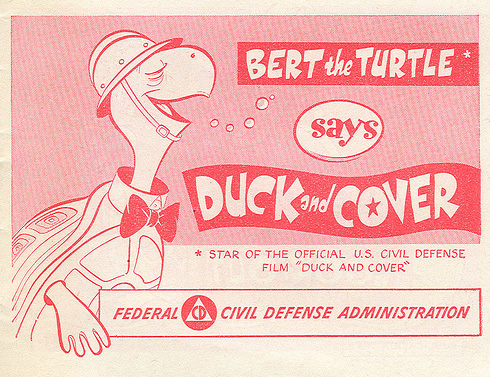
to be continued…
Watergate Exposed: How the President of the United States and the Watergate Burglars Were Set Up (as told to Douglas Caddy, original attorney for the Watergate Seven), by Robert Merritt is available at TrineDay, Amazon, Barnes & Noble, The Book Depository, and Books-a-Million.





